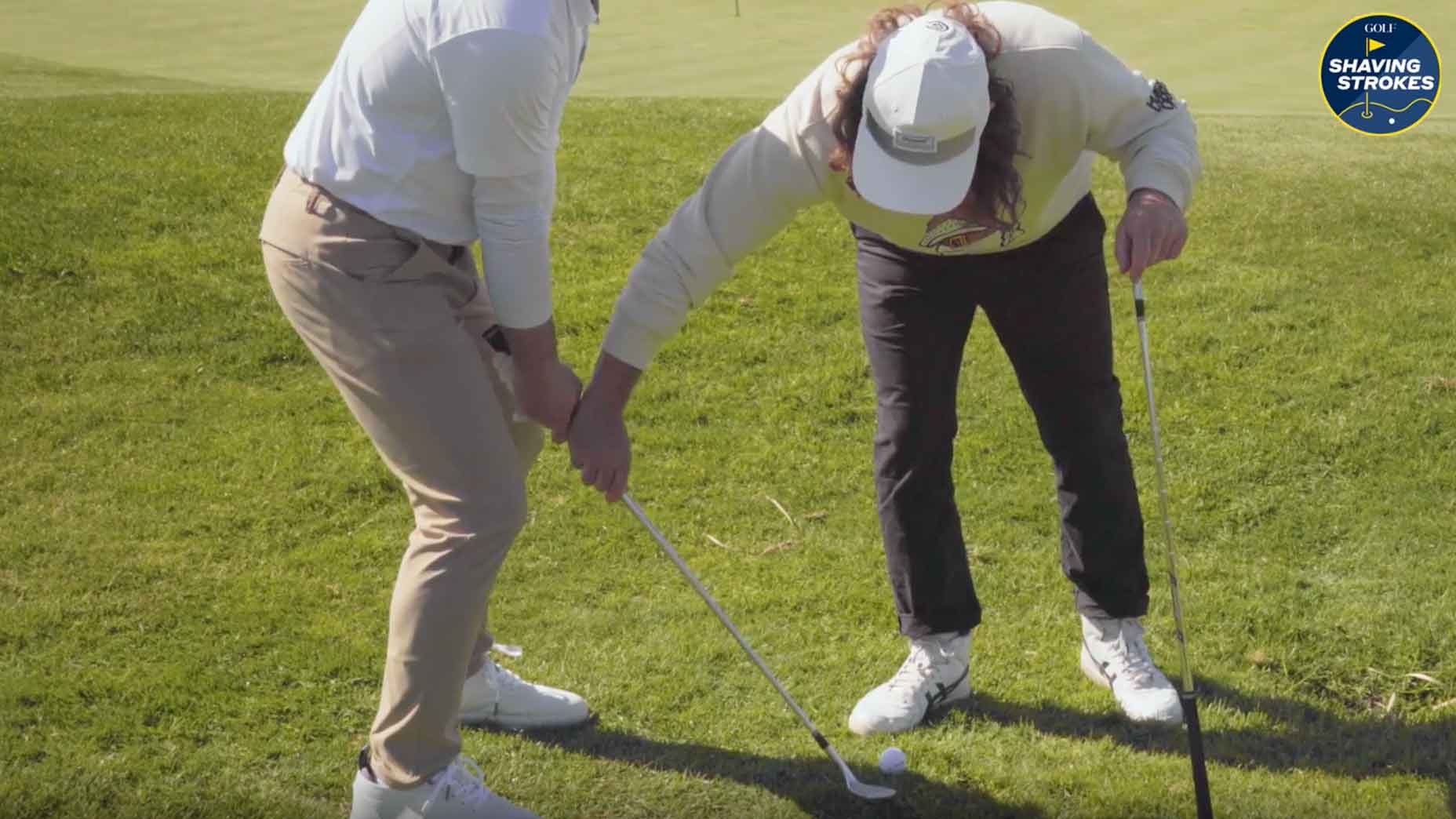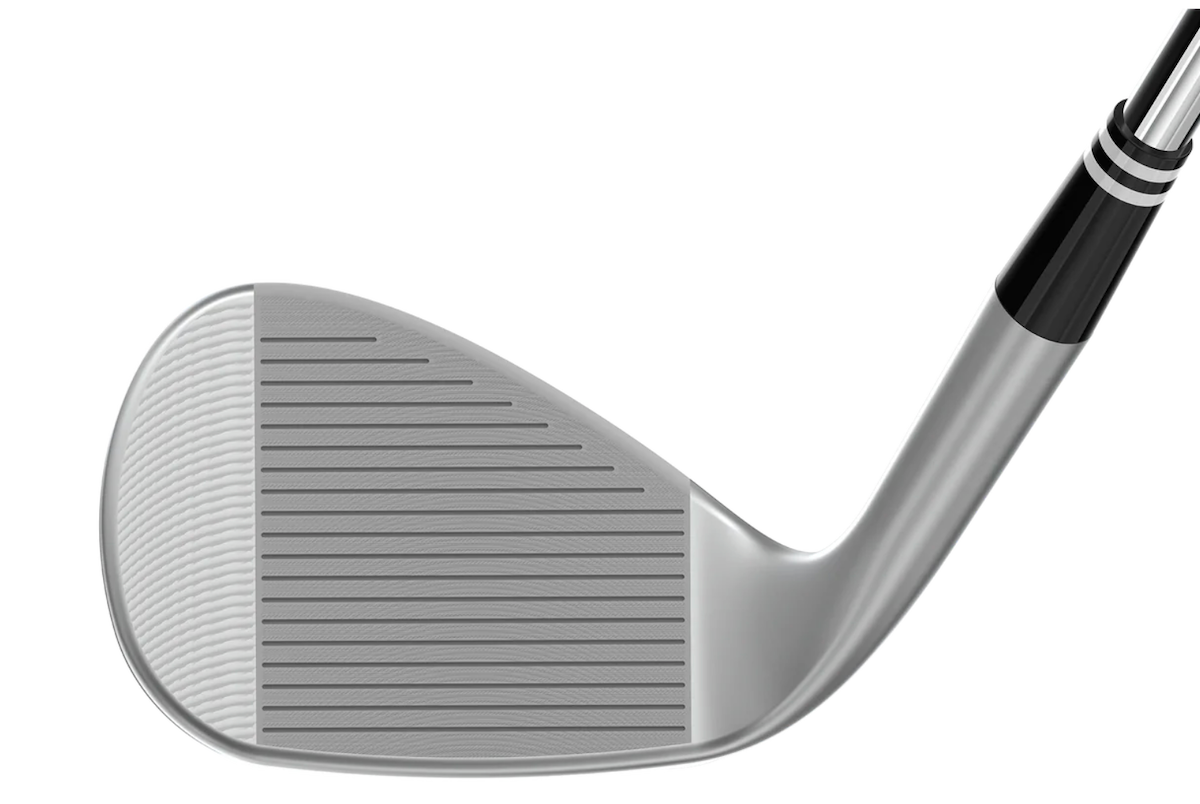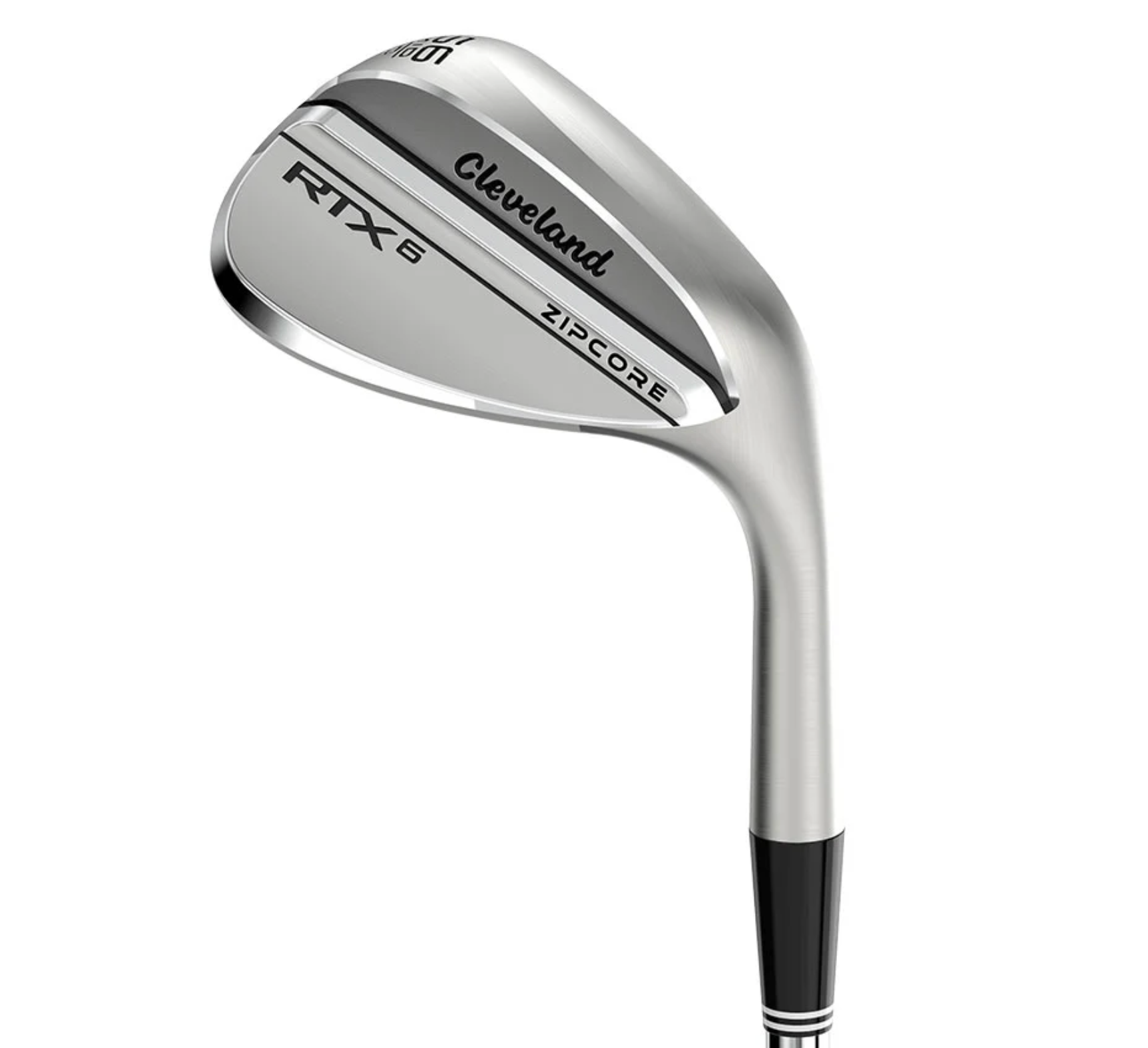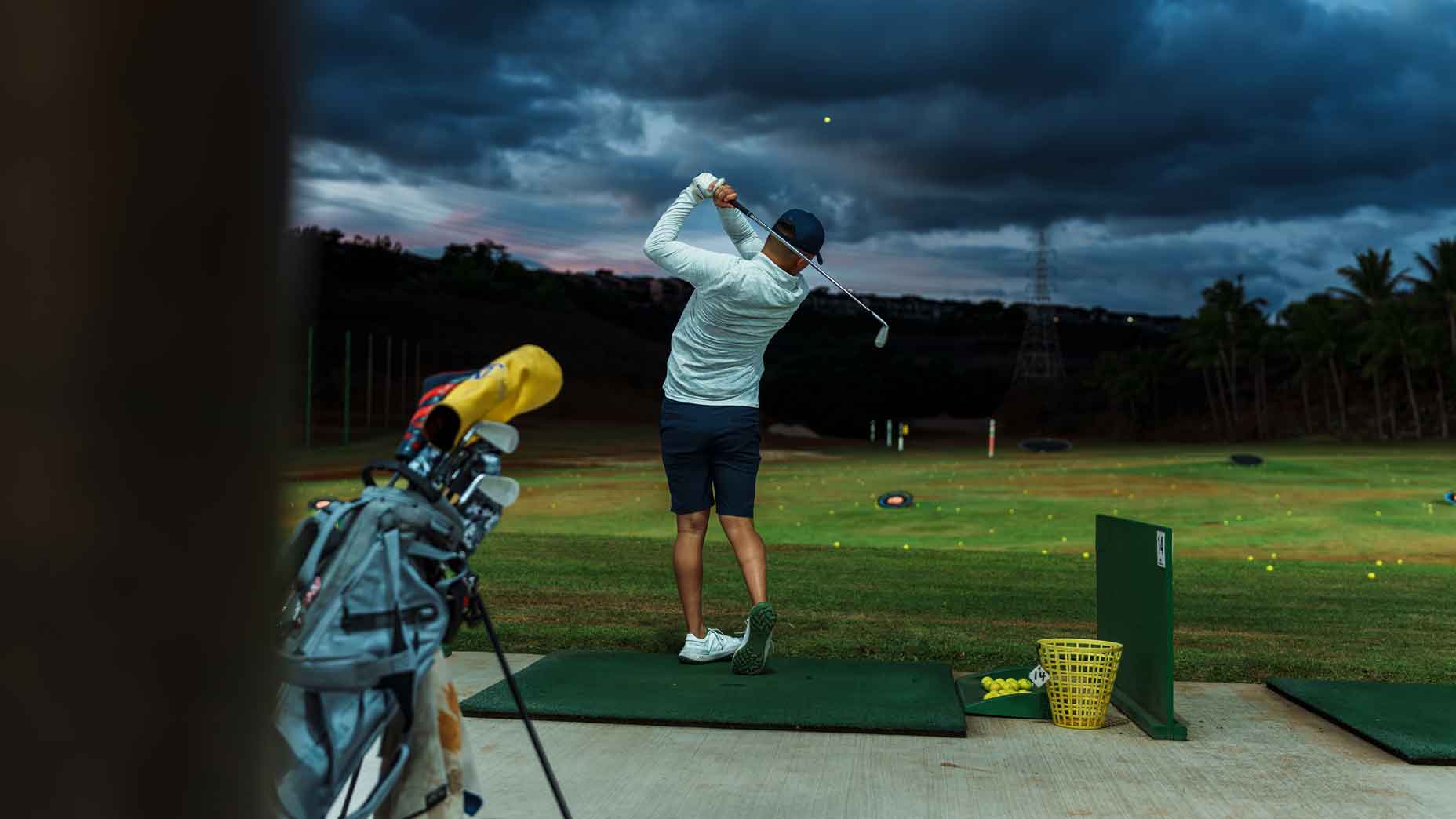How to hit a crispy flop shot that’s sure to impress your playing partners
- Share on Facebook
- Share on Twitter
- Share by Email

Every player loves the idea of hitting a flop shot with their wedges, so Cleveland Golf ambassador Jake Hutt shares his tips to do so.
GOLF
Welcome to Shaving Strokes, a GOLF.com series in which we’re sharing improvements, learnings and takeaways from amateur golfers just like you — including some of the speed bumps and challenges they faced along the way. Ed. Note: This article was published in partnership with Cleveland/Srixon.
Flop shots are like unicorns to many mid-to-high handicap players: They’re an uncatchable beast.
While hitting a stick flop shot is a great feeling and tends to get tons of compliments from buddies, in reality, they’re often only necessary under certain circumstances — like when you’re short-sided and need more height than the rollout from a chip shot.
But actually hitting an effective flop shot is tricky, and even attempting one can be scary if you don’t have the right technique.
All of our market picks are independently selected and curated by the editorial team. If you buy a linked product, GOLF.COM may earn a fee. Pricing may vary.

Cleveland CBX 4 Zipcore Custom Wedge
As a mid-handicapper myself, I always visualize a nasty flop shot that I see the pros hit. Then I try it and… oof. I typically chunk or skull it, only adding frustrating strokes to my round.
But during a recent lesson with Cleveland Golf ambassador Jake Hutt, I got some pointers on how to consistently hit a flop shot when around the greens — which is sure to get some “oohs” and “aahs” from your playing partners.
Do this to hit the flop shot of your dreams
As the video above shows, Hutt and I are just off the green, with the pin placement in a tricky position, which requires a flop shot to stick it close.
“We’re short-sided, and I’ve got my RTX 6 Zipcore full-faced wedge, while you’ve got your Cleveland CBX 4 ZipCore wedge there,” Hutt says. “You’re not giving up anything [with that club], and you’re able to hit every shot I am — but with a little bit more forgiveness.”
Next, he has me focus on my setup, which will ensure I’m able to get the low point of the club beneath the ball to execute a flop shot to perfection.
“We’re going to set up with our clubface wide open, a little extra knee bend and a little lower handle, and we’re not choking up,” he tells me.
Hutt then has me swing the club to practice the feeling of this type of shot. Many amateurs, myself included, often decelerate when trying to flop it, so it’s important to avoid that mistake and allow the club to work for you.
“The key here is making sure we slightly hit the ground before hitting the ball, and I want you to feel like the club is almost falling from the top here,” he says. “If you get [the club] back long enough, you can kind of just let it drop. Now we’re still releasing the club.”
Short-sided in a greenside bunker? Here’s how to get up and downBy: Nick Dimengo
Hutt then has me take some practice swings, making sure I miss the ground with one attempt, and then take a lot of grass with another.
“We want somewhere in-between that,” he says. “There’s no technical thought, that’s just skill.”
After hitting my shot, Hutt explains why every golfer needs to avoid falling into the trap of looking for a technical reason for hitting a flop shot. Instead, he doubles down on the idea to trust the motion and let the club do the work.
“It’s just the height of the club arc,” he tells me. “It’s a hard thing to do, but it doesn’t require any crazy technical thought.”
So when you’re practicing for a flop shot, Hutt says reverse engineer your motion and exaggerate the feeling of missing the grass with one practice swing, then really hitting the ground hard on the second practice swing.
“I like to go extreme,” he says. “Miss the grass completely, and then give me a whole bunch of grass, just messing around until you find somewhere in-between.”

Cleveland Golf RTX 6 Zipcore Custom Wedge
Latest In Instruction

Nick Dimengo
Golf.com Editor










